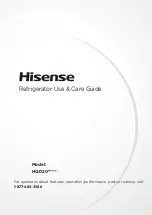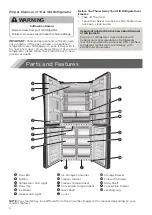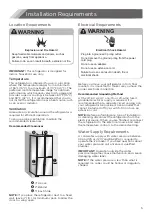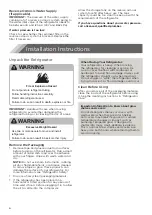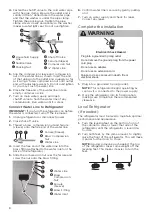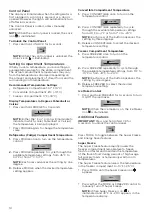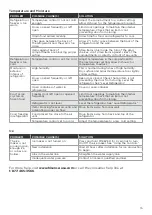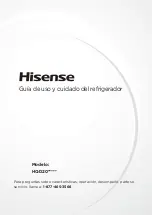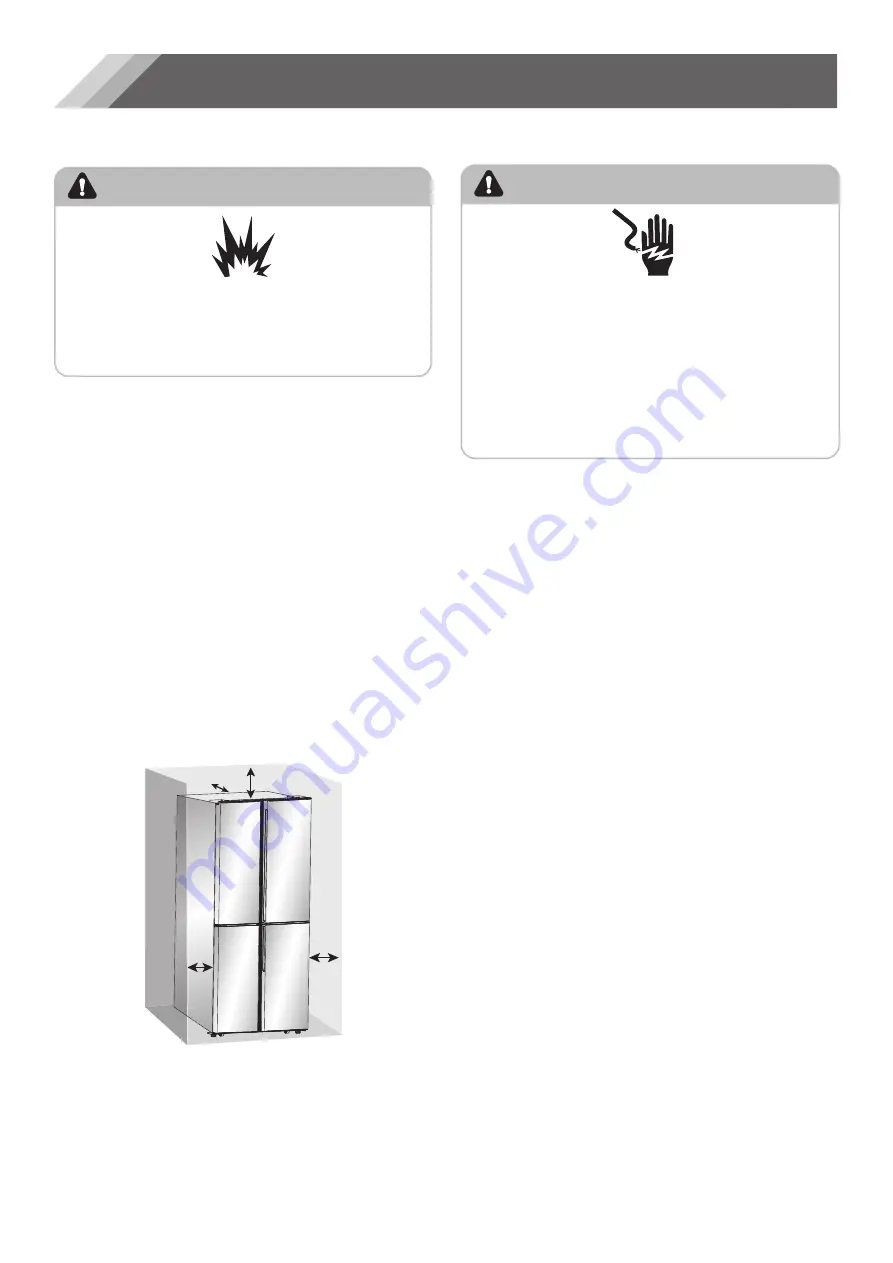
5
Installation Requirements
Location Requirements
WARNING
Explosion and Fire Hazard
Keep flammable materials and vapors, such as
gasoline, away from appliance.
Failure to do so can result in death, explosion or fire.
IMPORTANT:
This refrigerator is designed for
indoor, household use only.
Temperature
This refrigerator is intended for use in a location
where the temperature ranges from a minimum
of 55°F (13°C) to a maximum of 110°F (43°C). The
preferred room temperature range for optimum
performance, which reduces electricity usage and
provides superior cooling, is between 60°F (15°C)
and 90°F (32°C). It is recommended that you do
not install the refrigerator near a heat source, such
as an oven or radiator.
Ventilation
Adequate air circulation around the refrigerator is
required for efficient operation.
To ensure proper ventilation, maintain the
recommended clearances.
Recommended Clearances
a
b
c
c
a
4" Above
b
2" Behind
c
1/2
" Each Side
NOTE:
If you place the refrigerator next to a fixed
wall, leave 4" (10 cm) minimum space to allow the
door to swing open.
Electrical Requirements
WARNING
Electrical Shock Hazard
Plug into a grounded 3 prong outlet.
Do not remove the ground prong from the power
cord plug.
Do not use an adapter.
Do not use an extension cord.
Failure to do so can result in death, fire or
electrical shock.
Before you move your refrigerator into its final
location, it is important to make sure you have the
proper electrical connection.
Recommended Grounding Method
A 115 volt, 60 Hz, AC only 15- or 20-amp fused,
grounded electrical supply is required. It is
recommended that a separate circuit serving only
your refrigerator be provided. Use an outlet that
cannot be turned off by a switch. Do not use an
extension cord.
NOTE:
Before performing any type of installation
or cleaning, disconnect the refrigerator from the
electrical source. When you are finished, reconnect
the refrigerator to the electrical source and reset
the temperature controls to the desired setting.
Water Supply Requirements
A cold water supply with water pressure between
30 and 125 psi (207 and 862 kPa) is required to
operate the ice maker. If you have questions about
your water pressure, call a licensed, qualified
plumber.
IMPORTANT:
Operation outside the water
pressure range may cause malfunction and severe,
damaging water leaks.
NOTE:
If the water pressure is less than what is
required, ice cubes could be hollow or irregularly
shaped.

